ISSN 2348-1196 (print)
International Journal of Computer Science and Information Technology Research ISSN 2348-120X (online) Vol. 10, Issue 4, pp: (10-16), Month: October - December 2022, Available at: www.researchpublish.com

ISSN 2348-1196 (print)
International Journal of Computer Science and Information Technology Research ISSN 2348-120X (online) Vol. 10, Issue 4, pp: (10-16), Month: October - December 2022, Available at: www.researchpublish.com
1K.A.S.H Kulathunga, 2S.A.M Piyabhashitha, 3S.A.D.H.A Jayatilake, 4Jeewaka Perera, 5Dhammika Silva
1, 2,3,4,5 Faculty of Computing, Sri Lanka Institute of Information Technology Malabe, Sri Lanka
DOI: https://doi.org/10.5281/zenodo.7234060
Published Date: 21-October-2022
Abstract: Photographers frequently encounter a variety of issues when taking wildlife photographs. Many local and foreign wildlife photographers struggle with the lack of an efficient tool for detecting and discovering endemic Sri Lankan birds. A mobile application called "Ceylon Birds" was developed as a solution for these issues. It uses birds’ images, voices, and habitats to identify the birds. This mobile application will access the device’s camera, recorder, and Global Positioning System to accurately identify the bird, habitats and provide the bird’s details to the photographer. The concepts of Machine Learning, Natural Language Processing, and Neural Networks are used for this application. The information supplied by the Wildlife Officers, experts in this sector, was used to develop this application. The main goals of the suggested solution are to locatethe regionswhere the majority of birdsare present during a relevant time period and to clearly identify endemic birds by their physical characteristics and tones of voice. The trained Machine Learning models have achieved the accuracy of 92%, 90%, and 88% for the voice detection model, image identification model, and location clustering model respectively. After testing this “Ceylon Birds” mobile application among wildlife photographers, we have received positive feedback from them.
Keywords: image identification, voice detection, location clustering, machine learning.
One of the most standard photographic criteria among many photographers is wild photography. According to data gathered by a survey, wild photography criteria have ranked high among many photographers whereas indoor function photography, outdoorfunctionphotography,andobjectphotographyrankedasmoretypicalphotographycriteria.Participantsinthis survey stated that elegance blended with the diversity of nature that is beautifully caught by the lenses always tends to attract their attention.
In Sri Lanka, there are so many bird photographers, but most of them did not identify the birds by their appearance or vocals Some of the villagers are known about some of those birds. But the problem is many villagers also cannot find the endemic Sri Lankan birds. There is no exact knowledge about endemic birds. Therefore not only the local photographers, foreign photographers also face major problems in the endemic bird identification process
There are many applications available for bird identification. But the issue is those applications did not support for identify endemic Sri Lankan birds. And also those applications did not develop as online image and vocals upload format. Hence to find the bird’s details, photographers need to scroll and find out. It is much harder to do those things at that stage. Therefore it is reallyimportantto implement an AI (ArtificialIntelligence) based applicationfor wild photographers todetect endemic Sri Lankan birds. The main objectives of the ‘Ceylon Birds’ application are detecting whether the bird is endemic or not and displaying the birds’ details. If the bird is covered by any object system it will preprocess the captured image and display the relevant bird’s name. In case there is too much noise in the environment system will filter out those background noises and display the relevant birds’ names. In both cases, if the endemic birds cannot be identified, the application will provide the feature to identify the birds by asking questions by using their habitats and appearances. And also habitats of the
ISSN 2348-1196 (print)
International Journal of Computer Science and Information Technology Research ISSN 2348-120X (online)
Vol. 10, Issue 4, pp: (10-16), Month: October - December 2022, Available at: www.researchpublish.com
birds are classified on the map. The ‘Ceylon Birds’ application avoids all the difficulties of the past and gains new energy for the parties with an interest in birds that are endemic to Sri Lanka. Then the people who do not know about birds can access the area where birds roam at once without any hassle. This is more effective for wildlife photographers to achieve their goals successfully. Another benefit of the ‘Ceylon Birds’ application is to store all the searched records and increase the efficiency of the users who use the application.
According to the study in [1], the ‘Bird ID Master’ application is an interactive and easy-to-use material for identifying birds by capturing and getting details about the relevant bird. It combines pictures and vocals with bird details which allow users to experience it at any time. It helps to recognize the correct bird details via the application. And this application has been prepared for worldwide customers who are searching for birds. The proposed system provided by this study, it can only identify birds by capturing birds but there haven’t vocal identification and clustered data about birds.
With the help of the bird’s identification by capturing as mentioned in the study [2], the users will get motivational encouragement totryoutthisapplicationrecently.Therehasnotbeen much researchcarriedout to detectendemic SriLankan birds for users to use and meet their needs.
Accordingto severalresearch,provideclassificationofbirds,bird’svocals,livephotographs,and mappedthebird’s locations to users which track relevant birds and identify the birds by their pictures and vocals separately [3, 11, 12]. In some applications that increase the interest of users for their attractive features, respective bird habitats are shown separately on a map [1, 7]. Existing applications are either Image identification or sound recognition or classification, but currently, there is only software with one or two of these features.
In ‘Ceylon birds’ we try to combine all these requirements to get a better experience of multifunctional applications with modern features. After the user provides the specific characteristics of the bird that is seen and responds to the questions presented by the application and the software suggest bird or birds similar to those characteristics and display those bird or birds’ details.
The study investigated whether the use of a Merlin Bird ID by Cornell Lab application offers four fun ways to identify birds [4]. Answer a few simple questions, upload an image, record a singing bird, or explore birds in the region. This application may discover more about the birds you see and develop your birding skills by using expert ID advice, range maps, pictures, and sounds. This has customized lists of birds to find where you live or travel.
‘Picture Bird’ [5] is an existing mobile application that provides the facility to identify the birds all around you by simply takingaquickphoto withthemobilephone.Theuser needsto uploadaphotoofthebirdorcapture it fromthe camera directly and the user can identify the bird quickly. It allows users to learn the names of various kinds of birds, information about species, and more features. ‘Picture Bird’ has an extensive database about all kinds of 10000+ bird species.
Automatic detection and recognition of tonal bird sound in noisy environments research paper present a study of automatic detection and recognition of tonal bird sounds in noisy environments [14]. The detection of spectra-temporal regions containing bird tonal vocalization is based on exploiting the spectral shape to identify sinusoidal components in the shorttime spectrum. The detection method provides tonal-based feature representation that is employed for automatic bird recognition. The recognition systemuses Gaussian mixture models to model 165different bird syllables, produced by95 bird species. Standard models, as well as models compensating for the effect of the noise, are used. Experiments are performed on bird sound recordings corrupted by White noise and real-world environmental noise.
The proposed detection method shows high detection accuracy of bird tonal components [4]. According to [15], comparing recurrent convolutional neural networks for large-scale bird species classification the objective of the proposed system is to present a deep learning approach toward the large-scale prediction and analysis of bird acoustics from 100 different bird species.Theyuse spectrograms constructedonbird audio recordings fromthe CornellBirdChallengedataset, which includes recordings of multiple and potentially overlapping bird vocalizations with background noises.
Their experiments show that a hybrid modeling approach that involves a CNN for learning the representation for a slice of the spectrogram, and a Recurrent Neural Network (RNN) for the temporal component to combine across time points leads to the most accurate model on this dataset [15]. Further, analyze the learned representations visually and find them to be intuitive, where they find that related bird species are clustered [3] close together.
ISSN 2348-1196 (print)
International Journal of Computer Science and Information Technology Research ISSN 2348-120X (online) Vol. 10, Issue 4, pp: (10-16), Month: October - December 2022, Available at: www.researchpublish.com
They present a novel way to empirically interpret the representations learned by the LMU-based hybrid model which shows how memory channel patterns change over time with the changes seen in the spectrograms. And in the proposed system we are trying to make, by asking questions and getting answers from the user, removing the background of the photos taken by the user to display only the image of the relevant bird, and removing the background noise from the recorded bird calls will make the user experience an accurate and superior experience.
‘Ceylon Bird’ is an AI-based mobile application that helps photographers and endemic bird researches to detect endemic Sri Lankan birds. This application consists of three main components to detect endemic birds. We have used python as the primary programming language as it is a high-level and general-purpose programming language. And we have used firebase as the database.
At the beginning of the application new user can register and an existing user can log in. If a user saw a bird and wants to identify if that bird is endemic to Sri Lanka or not, the user can capture that bird by using the ‘Ceylon Birds’ application. If the captured bird is an endemic bird application will generate the relevant bird name or if the captured bird is not an endemic bird application will display the error message. Same as the previous user heard any voice of a bird and wants to identify if that bird is endemic to Sri Lanka or not, the user can record the bird’s voice and if the recorded bird is an endemic bird, the application will provide the relevant bird name or if the recorded bird is not an endemic bird application will display the error message.
The user is unable to capture or record the needed bird’s images or vocals there is an interesting feature in the ‘Ceylon Birds’ application. In the above situation, the application will be asked random questions, and provide the answers that the user sees features of that bird. Then the application will suggest the related birds’ names or names. Also, the application will display the locations on the map, where each endemic bird is mostly lived. There is an additional feature for newly interested users to get knowledge about Sri Lankan endemic birds by displaying a small description of all the 33 endemic birds
Bird images identify in using CNN. First of all, create and train the CNN model. There are many steps in Convolution neural networks. Choosing bird image dataset contains 10000 augmented images of endemic birds (JPEG) with accompanying bird type labels (CSV). There are approximately 300 images for each of the different 33 folders
After that prepare the bird dataset for training. Training will involve assigning paths and categories (labels), and resizing images. Create trainingdata inan array that contains the bird image pixel value and the bird image in the categories list. After that those data in shuffled and assign labels and features. normalizing X and converting labels to categorical data. CNN in uses X and Y split. Define compile and train the CNN model. Lastly, get the accuracy and score of the model. The “Fig. 1” shows the training process of dataset using CNN to identify the birds.
Fig 1: CNN Image Identfication Diagram
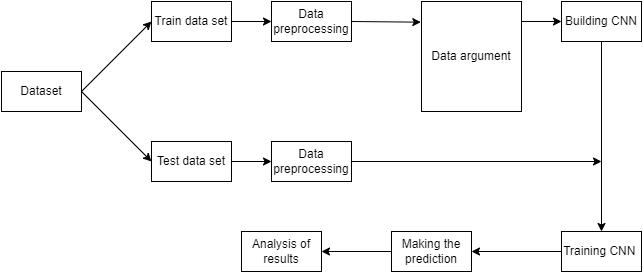
ISSN 2348-1196 (print)
International Journal of Computer Science and Information Technology Research ISSN 2348-120X (online) Vol. 10, Issue 4, pp: (10-16), Month: October - December 2022, Available at: www.researchpublish.com
Bird voicerecognitionis used in the Multilayerperceptrons classifier(MLP).MLP isa supplement to the feed-forward neural network. There are three layers in MLP. Type of layer in the input layer, hidden layer, and out layer
The hidden layer in computation in MLP every neuron in the output and hidden layer are as follows,
O(x) = G(b)(2) + W(2)h(x)
H(x) = (x)=s(b)(1) + W(1)(x)
Bias vectors b(1), b(2); weight metrics W(1), W(2), and activation function G and s. the set of parameters to learn is the set = W(1), Tb(1), W(2), b(2). Typical choices for s include tanh function with tanh(a) = (ea e a)/(ea + e a)or the logistic sigmoid function, with sigmoid(a) = 1/(1 + e a). MLP Classifier stands for Multi-layer preceptrons Classifier in connecting to the neural network. The “Fig. 2” shows the process extracting features and predicting the vocal results using MLP classifier.
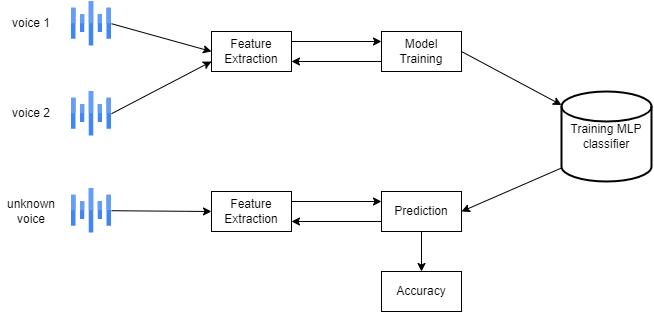
The system was a stage where models are converted into a working system. The dataset consists of bird vocal commands. There are 33 sets of endemic birds. There are several stages in MLP Classifier bird vocal detection. Dataset features extraction, testing, and training stage in bird vocal recognition. Proposed system Recognition from bird vocal. We used MLP Classifier and sound file library to read the sound file, and the librosa to extract sound features. So will show the batter accuracy in bird vocal.
1) Dataset Using in bird vocal RAVDESS dataset, this is the audio database of bird vocals. There are 3000 audio files. Which includes 33 different bird vocals
2) Features extraction Extract the mfcc, chroma, and meld features from the sound file. This will take 4 parameters and the file name and three Boolean parameters. The three features are mfcc mel frequency cepstral coefficient represents the power spectrum of a sound.
3) Training and testing Load in data relative to sithe ze of the test set as parameters. X and Y are empty. Function checking bird vocal. The features will be sent to X and y. now the testing function will be called.
If don’t have a captured photo or don’t have a recorded bird voice, the bird is identified by bird appearance and habitat input application, therefore, the application display in specific endemic bird name by Using a clustering algorithm. The algorithm subdomaininmachine learningis deep learning.Thereare manycluster models used inclusteralgorithms “Fig. 3”illustrates the process of clustering text.
ISSN 2348-1196 (print)
International Journal of Computer Science and Information Technology Research ISSN 2348-120X (online) Vol. 10, Issue 4, pp: (10-16), Month: October - December 2022, Available at: www.researchpublish.com
Fig 3: Clustering Text Generator
We have conducted a survey by using a selected group of people in a different type of ages. For that, we asked several questions about identifying endemic birds in Sri Lanka.
More than 1000 of bird images are gathered to create the database collection. In order to get higher accuracy, the model has been trained using CNN. As shown in the “Fig. 4”, the accuracy increased by training the CNN model with 80 epochs is 99%, and the loss is 2%. More training data can be fed to the neural network to increase accuracy.
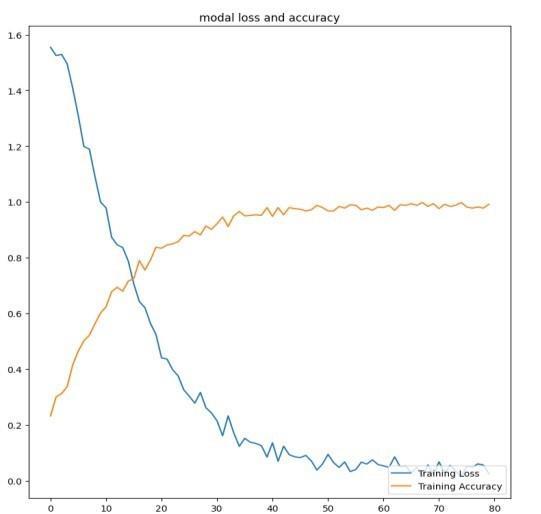
Fig 4: Loss and Accuracy graph of the Bird detection model
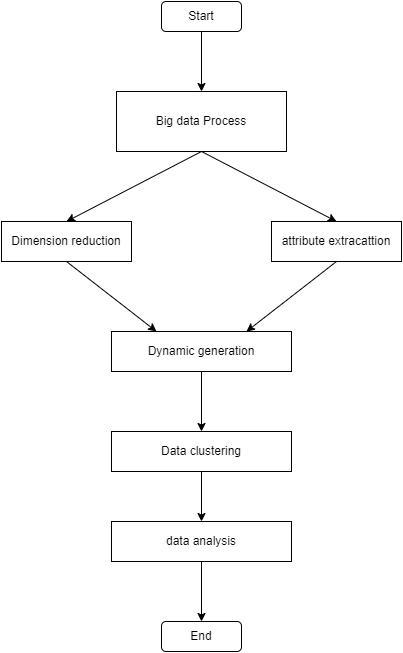
ISSN 2348-1196 (print)
International Journal of Computer Science and Information Technology Research ISSN 2348-120X (online) Vol. 10, Issue 4, pp: (10-16), Month: October - December 2022, Available at: www.researchpublish.com
The dataset has been created using a collection of 3000 bird vocals. All the audio files are in .wav format. The feature extractioninthe vocalidentificationdetectionmodelhasbeendone usingMELSpectrogramFrequency(mel), chroma, mfcc, contrast, and tonnetz, and model training was done using an MLP classifier. The trained accuracy we obtained was 92% and we can improve the accuracy by scaling up the dataset collection.
‘Ceylon Bird’ applications’ target birds are the endemic birds in Sri Lanka. When we developed this mobile application we included many graphics, images, and colors to enhance the user interface. Furthermore proposed application was very userfriendly to use without having much prior knowledge about the technology.
The application will present several questions about features and habitats. Then the user wants to answer those questions as seen. After that application will cluster and display the relevant bird name or related birds’ names on the screen and display those birds’ climate zones on a map as shown in the “Fig. 5”.
We have conducted a survey by using a selected group of people of different type of ages. For that, we asked several questionsaboutidentifyingendemicbirdsinSri LankaasshowninTABLEI. Wegathered detailsabouthowpeopleidentify birds in general, and the results of that survey are shown in TABLE II.
Problem with bird identification Percentage
Can you visually identify the endemic birds in Sri Lanka? 35%
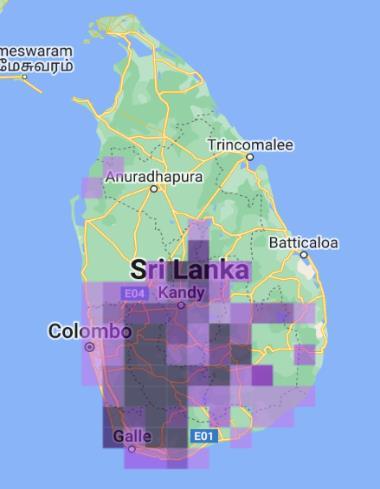
Can you identify the endemic birds in Sri Lanka by hearing the singing of the bird? 2%
Do you know the longest periods of residence by each endemic bird? 8%
Do you have an understanding of the areas that birds have chosen as habitats? 40%
Methods to identify the endemic bird Percentage
By asking the guides 26%
By asking the adults 70%
By asking searching on the internet 98%
By asking the professionals 36%
ISSN 2348-1196 (print)
International Journal of Computer Science and Information Technology Research ISSN 2348-120X (online) Vol. 10, Issue 4, pp: (10-16), Month: October - December 2022, Available at: www.researchpublish.com
In Sri Lanka, there are no endemic bird identification applications available for wild photographers. The ‘Ceylon birds’ is an appearance, vocals, and habitat base Sri Lankan endemic bird identification mobile application which has been specifically created for wild bird photographers. As future tasks, it is expected to feed more data for the dataset and train the models to obtain even more accuracy. It will help to provide a much better experience for the users. Since this implemented mobile application is available only in the English language, we expect to expand this application to be available in multiple languages. Further, we plan to scale up this application to detbirdsall the bird in Sri Lanka. We hope to support bird photographers in their photography by providing better bird identification and details to fulfill the requirements that are currently lacking in the wild bird photography field.
The authors of this research paper would like to thank the Sri Lanka Institute of Information Technology (SLIIT) for the encouragement and for providing better guidance to pursue this research. Then we would like to thank the enormous support received from Mr. Santha De Soisa who is working as an RFO in Sinharaja ranforest. And also, Mr R. Jayasekara and Mr. B Subasinghe from udugampola national park for providing information for this study.
[1] Bird.Art. (July 28, 2020). Bird ID Master (Version 0.0.10) [Mobile App]. Retrieved from https://play.google.com/ store/apps/details?id=net.dongniao.birdidmaster&hl=en&gl=US
[2] A. Singh, A. Jain, and B. K. Rai. April 2020. “Image based Bird Species Identification”
[3] R. H. Macedoa, J. Podosb, J. A. Gravesc, and L. T. Manica. March 2018. “Breeding clusters in birds: ecological selective contexts, matingsystems and the role of extrapair fertilization”
[4] Cornell Lab of Ornithology. (June 26, 2014). Merlin Bird ID by Cornell Lab (Version 2.1) [Mobile App]. Retrieved from https://play.google.com/store/apps/details?id=com.labs.merlinbirdid.app
[5] Next Vision Limited. (January 9, 2020). Picture Bird - Bird Identifier (Version 2.9.4) [Mobile App]. Retrieved from https://play.google.com/store/apps/details?id=com.glority.picturebird&hl=en&gl=US
[6] Y. Huang and H. Basanta May 2019. “Bird Image Retrieval and Recognition Using a Deep Learning Platform”
[7] P. Gavali, P. A. Mhetre, N. C. Patil, N. S. Bamane, and H. D. Buva. April 2019. “Bird Species Identification using Deep Learning”
[8] S. Tamilalagan. April 2022. “Image-based Bird Species”
[9] A. Incze´ H. B.Jancso´, Z. Szila´gyi´, A. Farkas, and C. Sulyok. September 2018. “Bird Sound Recognition Using a Convolutional Neural Network”
[10] S. Cheng and J. Wang. “Detection of Bird Species Through Sounds”
[11] S. Kahl, T. W. Stein, H. Klinck, D. Kowerko, and M. Eibl. April 2018. “Recognizing Birds from Sound - The 2018 BirdCLEF Baseline System”
[12] M. V. Conde, K. Shubham, P. Agnihotri, N. D. Movva, and S. Bessenyei. July 2021. “Weakly-Supervised Classification and Detection of Bird Sounds in the Wild. A BirdCLEF 2021 Solution”
[13] Y. Wang, Y. Zhou, Y. Liu, Z. Luo, D. Guo, J. Shao,F. Tan, L. Wu, J. Li, and B. Yan. August 2013. “A grid-based clustering algorithm for wild bird distribution”
[14] P. Jncovic and M. Kokuer. February 2011. “Automatic Detection and Recognition of Tonal Bird Sounds in Noisy Environments”
[15] G. Gupta, M. Kshirsagar, M. Zhong, S. Gholami, and J. L. Ferres. August 2021. “Comparing recurrent convolutional neural networks for large scale bird species classification”
[16] K. Kufman. Retrieved April 12, 2017, from Audubon.org website: https://www.audubon.org/news/how-startidentifying-birds-their-songs-and-calls